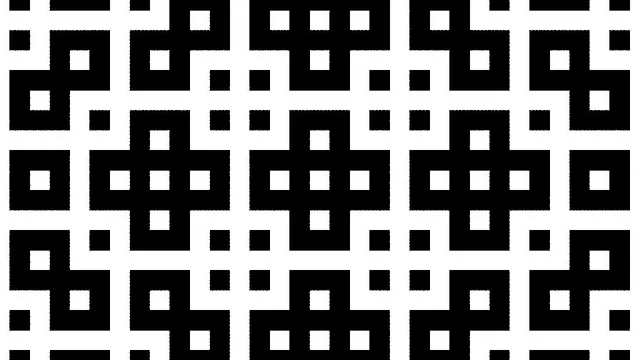Exploring Truchet Tiles and Beyond
The article explores the fascinating world of Truchet tiling and its variations. New methods are introduced to enrich Truchet tiling and to create visually interesting results. Finally, an open source Python implementation of the proposed methods is given.
Analytics
Comments
7.9
I really liked it! The only real critiques I have is that I would have liked an explanation on the criteria for “good tiling”. I understand it’s mostly a subjective thing but you can put your own version of what is good as the standard for good. Something like, noticeable repeating pattern, not a lot of random noise, etc. The other thing I would have liked would be a gif showing the creation of one of these tilings. I think it would have been satisfying and I’m sure it would not be too hard to do since you wrote it in python and manim can animate your python code :). Overall 9/10
8.6
Your article is extremely detailed and shows the effort put into it. The PY code also provided also offers a wonderful place to start for other research. Congratulations for the submission!
7.1
Nice job ! It make me think to this
https://www.shadertoy.com/view/csdyDS
5
This was my first time learning about Truchet tiles, and it was a pleasant read. It wasn't clear to me what the XOR function and the compositions were doing for the pictures, so their choice felt random. It is also not clear where I should go from here.
7
Cool patterns! Cool code but it could take an image input to make it work with any doodle you make...
4.5
The patterns shown are beautiful!
But there isn't much mathematical discussions around it. Maybe they could have discussed the reasons the patterns occur, or discuss some relation with other mathematical results or observations. It's nice, but I feel there is little maths in this exposition.
But again, beautiful, so still, well done.
4.9
Fun exploration through a concept, though the article would read more clearly with a bit more objectivity. For example, some of the arbitrary choices could be better explained, like how the particular, rather non traditional, application of XOR was chosen.
6.1
Enjoyed this, especially seeing the matrix representation of the Tiling.
Good stuff!
6
The XOR tiling is closely related to the Thue-Morse sequence, as it deals with the parity of the number of 1-bits in binary representations.
5.5
Appreciate the visualization alongside the text. It permits a more accessible way to explore the space of thought (as opposed to having the code and changing things there). It is a bit less interactive than code, but the potential audience is larger.
5
I’m glad you did colored versions of the earlier tilings, I had thought that was an opportunity missed but you didn’t miss it after all.
6.5
good, me likey.
7.7
Ugh, I wish Medium didn't block more than half the dang screen with its 'please subscribe' banners.
But having got past that, I love mathematical image generation tools, and I didn't know what 'Truchet tiles' were called before. This is an article that inspires me to go off and try what you've described for myself, which bumps it up to a clear top 3 favourite for me. It also does well because it gives a lot of artistic benefit while only needing very little simple maths.
7.1
Thank you for your entry. Really neat how we could get a non-periodic but structured solution set using exclusive OR (XOR) function to product this mesmerizing tiling structure. Your article had a sense of playfulness as things progressed from its history to definitions, properties and a its visuals. If you'll expound further on this topic, I'd recommend capturing an audience. Initially, I found this sparked my inner creative designer when selecting patterns for digital backgrounds. That is to say, I found this to be a pretty good introduction on Truchet tilings. Figuratively, I was left with an "open playground" (thanks for sourcing the code!) Now, you need to create a call-to-action for those who are giddy to join the "slide," or "swing," yet need that invite by seeing how it applies to a field.
7.4
In Smith's version, you've claim that the "width" of each enclosed region is about the same. I don't quite understand it and wish you would elaborate more on this, e.g., color a few example close regions and make a quick analysis (or just claim) that the width is about 2 unit long.
Also, can there be an enclosed region within other enclosed region (and within another enclosed region, and so on), like the cross section from the top of a pyramid? Will that case break with the coloring?
6.4
This was quite an interesting concept to look at tilings which was a unique topic that I've seen. I liked that we showed various functions to explore the different tilings that we see. It'd be good if we could see if there's any additional information on what makes particular functions unique in terms of producing nice tilings as well as a short proof to indicate that this tiling will be 2 colourable as well.
7.6
Wonderful exploration. Might be helped by some trimming of the less interesting patterns, but highly novel and memorable. Reminiscent of the kind of things I love to do as well.
